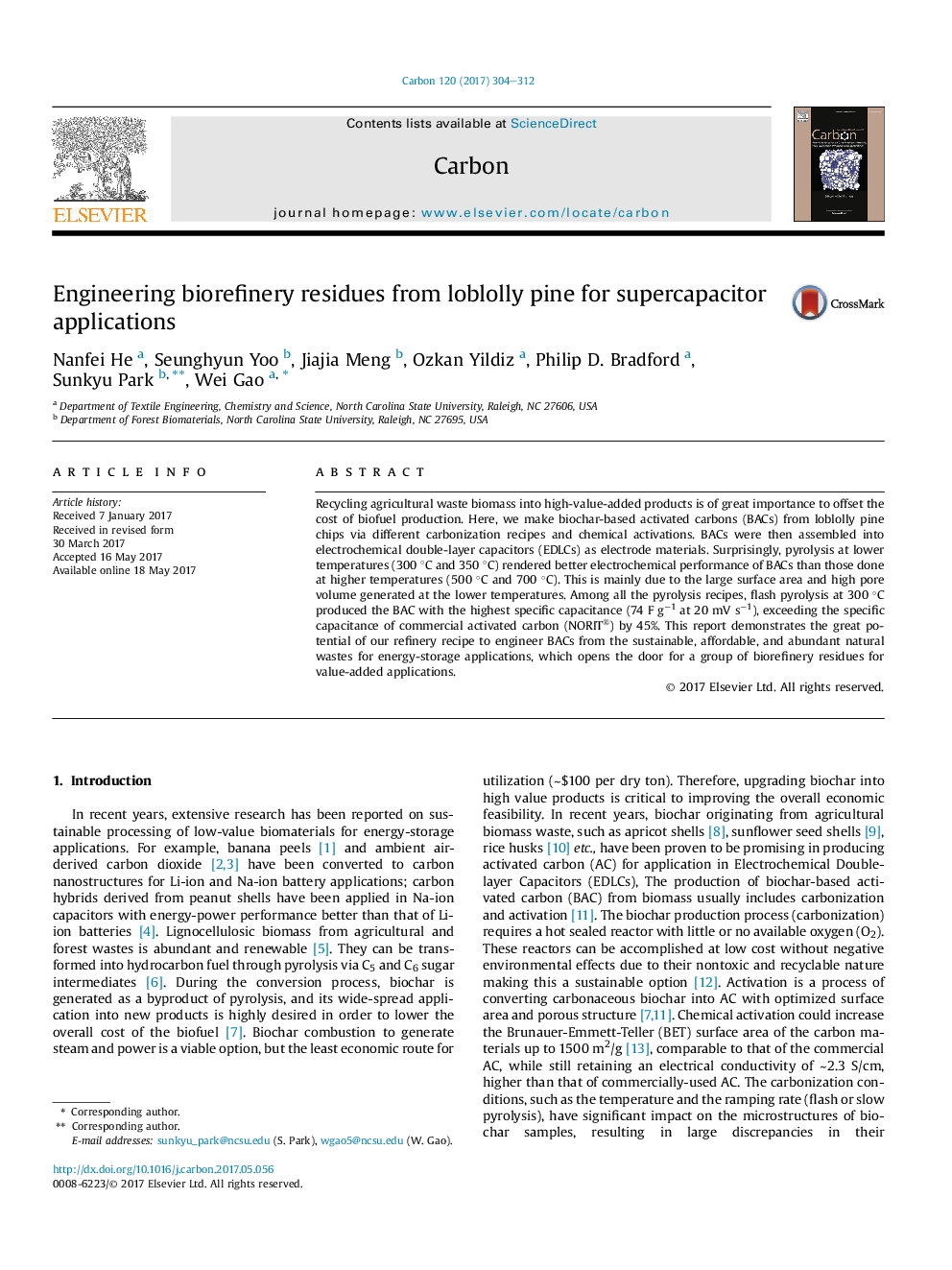| Article ID | Journal | Published Year | Pages | File Type |
|---|---|---|---|---|
| 5431653 | Carbon | 2017 | 9 Pages |
Recycling agricultural waste biomass into high-value-added products is of great importance to offset the cost of biofuel production. Here, we make biochar-based activated carbons (BACs) from loblolly pine chips via different carbonization recipes and chemical activations. BACs were then assembled into electrochemical double-layer capacitors (EDLCs) as electrode materials. Surprisingly, pyrolysis at lower temperatures (300 °C and 350 °C) rendered better electrochemical performance of BACs than those done at higher temperatures (500 °C and 700 °C). This is mainly due to the large surface area and high pore volume generated at the lower temperatures. Among all the pyrolysis recipes, flash pyrolysis at 300 °C produced the BAC with the highest specific capacitance (74 F gâ1 at 20 mV sâ1), exceeding the specific capacitance of commercial activated carbon (NORIT®) by 45%. This report demonstrates the great potential of our refinery recipe to engineer BACs from the sustainable, affordable, and abundant natural wastes for energy-storage applications, which opens the door for a group of biorefinery residues for value-added applications.
Graphical abstractDownload high-res image (327KB)Download full-size image
